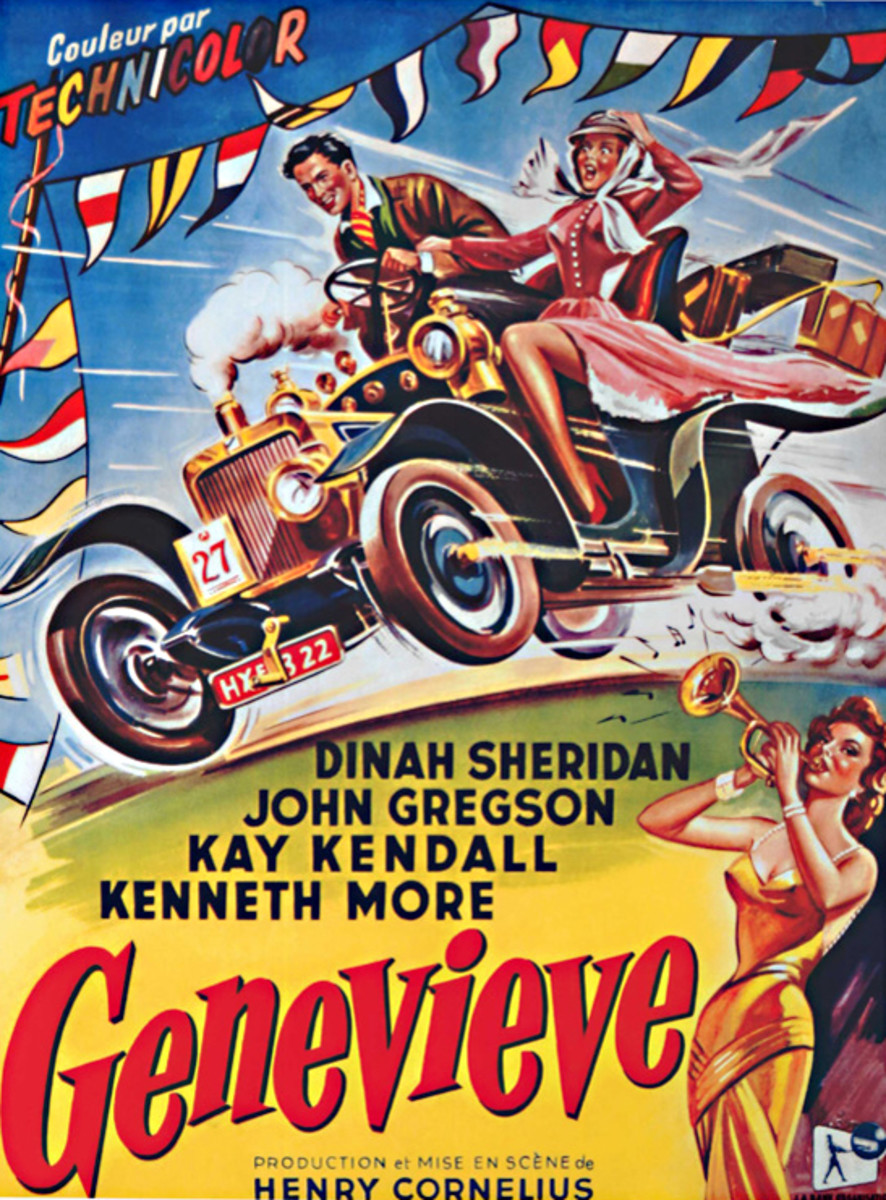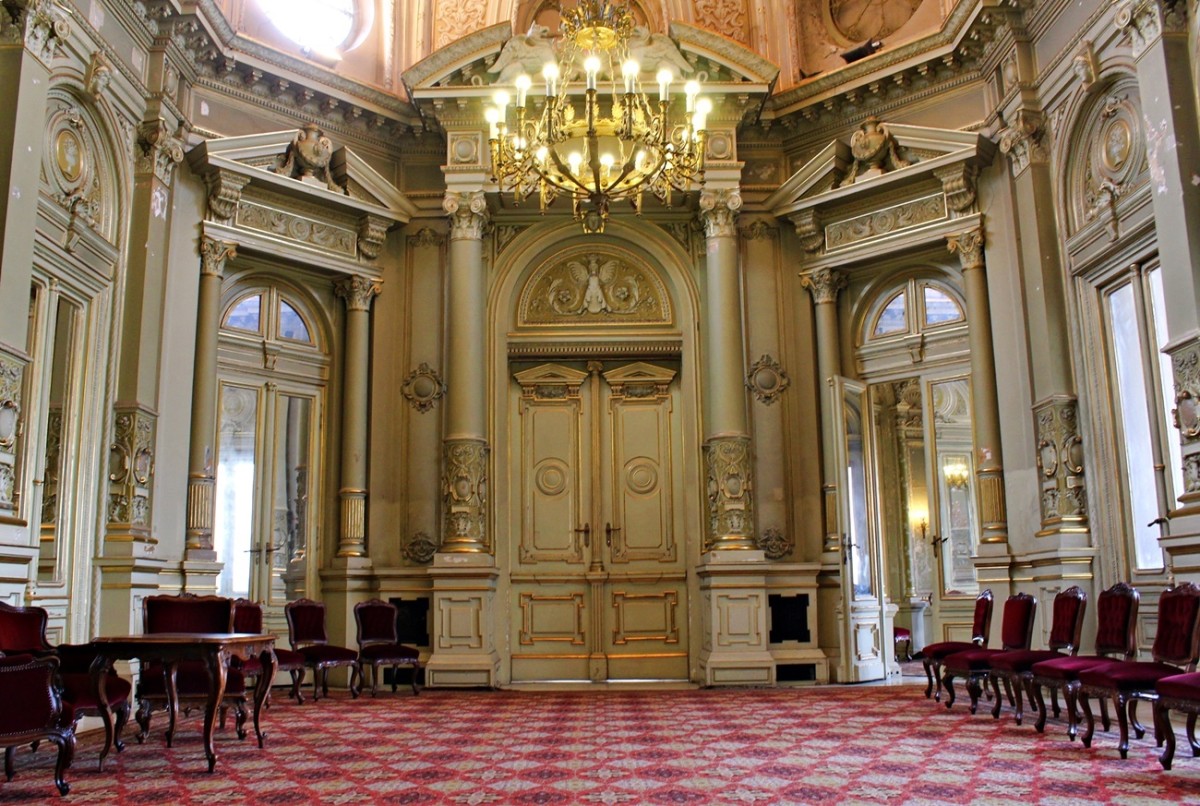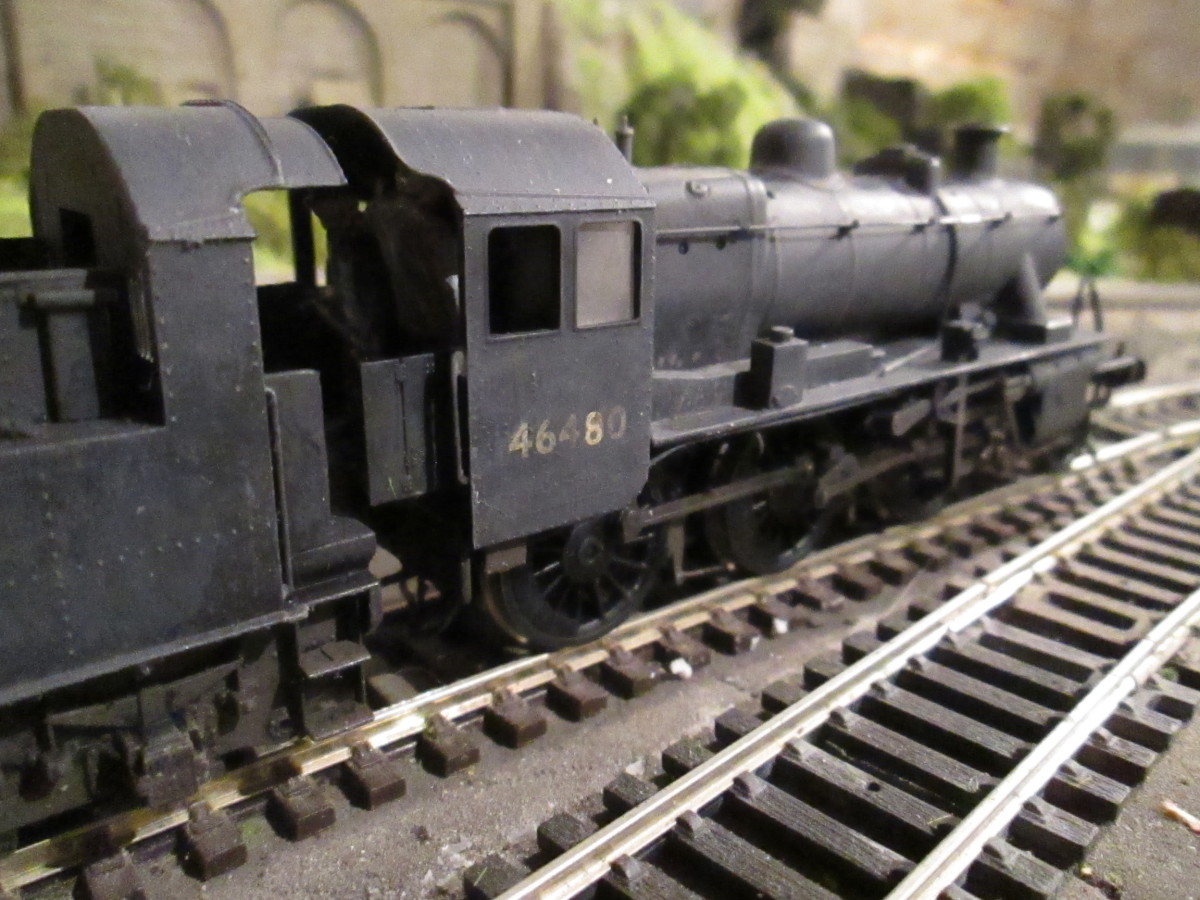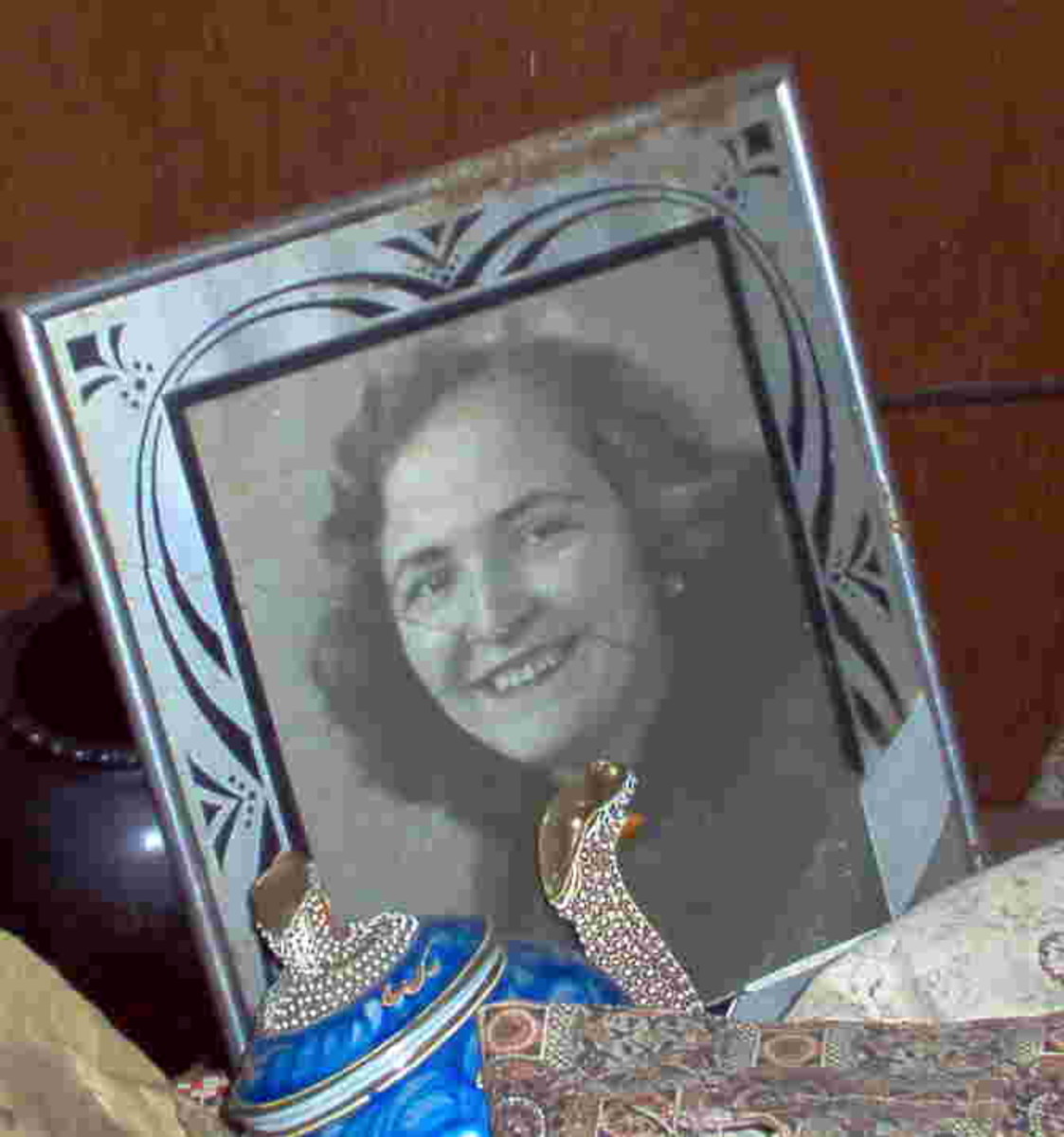- HubPages»
- Books, Literature, and Writing»
- Books & Novels»
- Fiction»
- Science Fiction & Fantasy Books
Steampunking Poe in Brighton

Introduction
I was very pleased when I was asked to submit a ‘punked’ interpretation of Edgar Allan Poe for Writerpunk Press’s planned anthology Merely This and Nothing More: Edgar Allan Poe Goes Punk. I was even more pleased when my submission was chosen to be included in this publication which will be available from May 31st 2016. So here is a little background information with regard to my contribution to the Poe anthology, entitled: The Oval Sky Room.

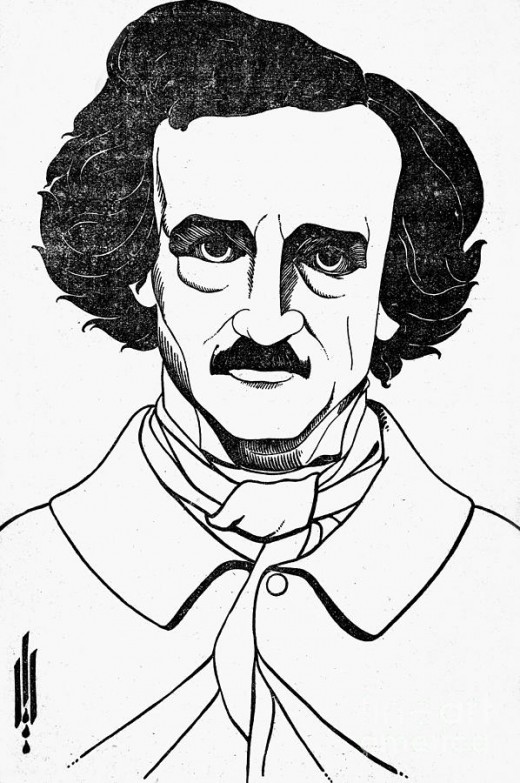

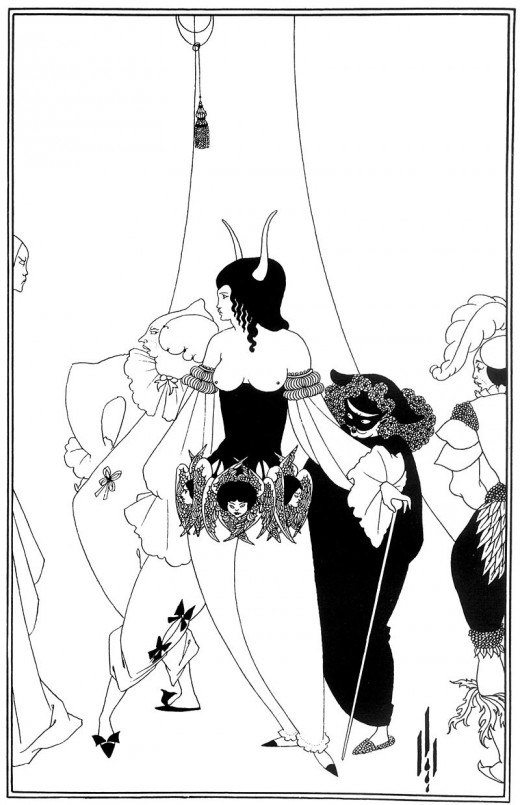
The Oval Sky Room
In seeking a Poe story I wanted to try and get off the beaten track and found a proper gem in The Oval Portrait which contains a few themes which seem to me very Poe-esque: Namely mortality vs immortality and the transitory nature of beauty. The beauty in my The Oval Sky Room is a young Brighton slum girl by the name of Lottie Carnell and the antagonist is Hiram Orville from Baltimore. I failed somewhat in my intention to avoid the more well-known Poe stories for almost all of the words Hiram Orville speaks when he loses himself in philosophical rambles are direct citations from those other Poe stories.
I cannot tell you a great deal about the content of the story without immediately getting into spoiler territory, however, I can reveal a little about the machinations of my mind in writing it. The main plot idea was clear to me fast enough after I read Poe’s The Oval Portrait, especially since I was meant to ‘punk’ it and to me Steampunk requires an airship. Hence the oval sky room, the viewing platform atop of the hull of the world’s most luxurious air yacht (The Charites). Hiram Orville’s nationality and Baltimore origin was a nod to Poe which left me with a setting that could both be Lottie Carnell’s hometown and a somewhat logical place for The Charites to dock. I did not have to look far, for upon viewing Brighton from a Steampunk perspective I decided that this seaside resort has all the ingredients required for Steampunk fiction.
In a short aside: There is even a link between Poe and Brighton provided to us by the Brighton-born artist Aubrey Beardsley (1782-1898). Beardsley was the first art editor of the famous (or infamous) Yellow Book quarterly journal which is closely associated with the Aestheticism and Decadence movements and the ‘yellow nineties’ (1890s). Not only did Beardsley leave us with a portrait of Poe but he was also commissioned by an American publisher to provide illustrations for Short Stories by Edgar Allan Poe.
Back to Brighton and its suitability as a Steampunk setting. A great part of this is due to the fact that the village and later impoverished township of Brighthelmston did not see serious development until the Georgian period when visiting the seaside for health benefits became fashionable. The development of Brighton as a seaside resort was further encouraged by the Prince of Pleasure (the Prince Regent who would later become King George IV), who visited in 1783 and continued to frequent the town on a regular basis in order to escape the confines of court in London and indulge in various pleasures.
In Victorian times the London & Brighton Railway made Brighton accessible to day-trippers from London, spurring new attractions and a huge growth in population. As such Brighton is a town designed during a period which has a great deal of overlap with the Steampunk period. Much of that is still visible, a walk through Brighton and Hove seems, at times, almost like time travel back to the Victorian era. So let me take you by the hand and lead you through the streets of Brighton, and I'll show you something that might just punk your mind.
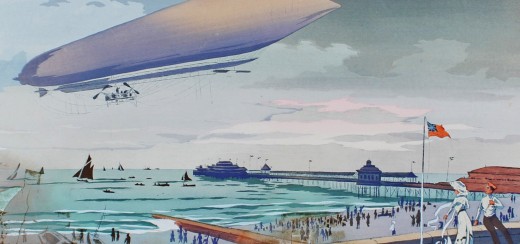
Regency & Victorian Architecture
The Prince Regent was notorious for his behaviour. A dandy; he appeared in the House of Lord for the first time wearing black velvet and pink high heels and once bought 83 pairs of boots and 74 pairs of gloves on the same day. A drunkard; he drank gin by the pint (watered down but none-the-less!) and sent Royal Navy ships to fetch one of his favourite liqueurs from the Med. A glutton; one 1830 description of a royal breakfast said George had “a pigeon and beef steak pie, of which he ate two pigeons and three beefsteaks, three parts of a bottle of Moselle, a glass of champagne, two glasses of port and a glass of brandy!” A womaniser; he had affairs with duchesses and prostitutes and secretly married his mistress Mrs Fitzherbert. Other than that he was fond of gambling, gaming and the theatre. In short, the Prince Regent was kind of sleazy; a reputation which was (and still is) transferred to Brighton itself, though the wonderful thing about Brighton is that its inhabitants beam proudly when you remind them of this reputation. The word 'sleazy' is a compliment here and as such has a different meaning than it does in the rest of England.
With his behaviour the topic of gossip and disapproval in London, George escaped to Brighton when he could and his seaside retreat, started in 1787, had grown into a lavish exotic palace by the time it was completed in 1823. Architect John Nash was responsible for the Indo-Saracenic style and the domes and minarets of the Royal Pavilion have become a Brightonian icon.
George, “the most extraordinary compound of talent, wit, buffoonery, obstinacy and good feeling that I ever saw in one character in my life,” according to the Duke of Wellington, favoured Brighton which helped a great deal in establishing the town’s popularity as a seaside destination during the Regency era. A lasting legacy of this period of expansion are the numerous examples of Regency style buildings with their stuccoed facades, classical style mouldings, bay windows, fluted ionic pilasters, decorative capitals and elaborate parapettos.
Iconic Victorian features within the town itself include the Victoria Fountain at the Old Steine Gardens, inaugurated on 25 May 1846 in honour of Queen Victoria’s 27th birthday and the Jubilee Clock Tower, built in 1888 in commemoration of Queen Victoria’s Golden Jubilee. Magnus Volk, a prominent Brightonian inventor, designed a time ball for the clock tower, which has a hydraulically operated copper sphere that moved up and down a 16 foot metal mast every hour in response to electric signals transmitted from the Royal Observatory in Greenwich. The tower is either loved or hated; seen as “extremely charming and delightful” to “charmingly ugly” to “worthless” and a “giant salt-cellar”.
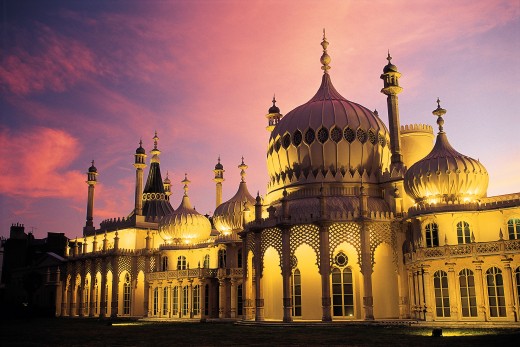
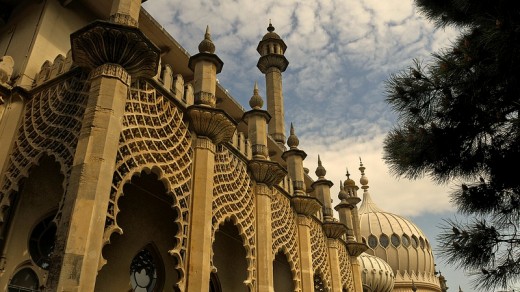
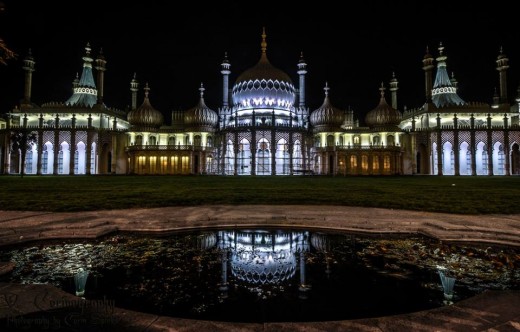
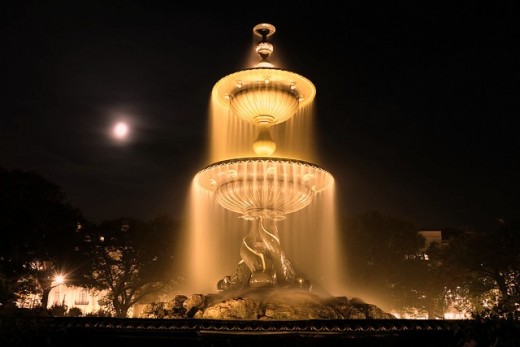
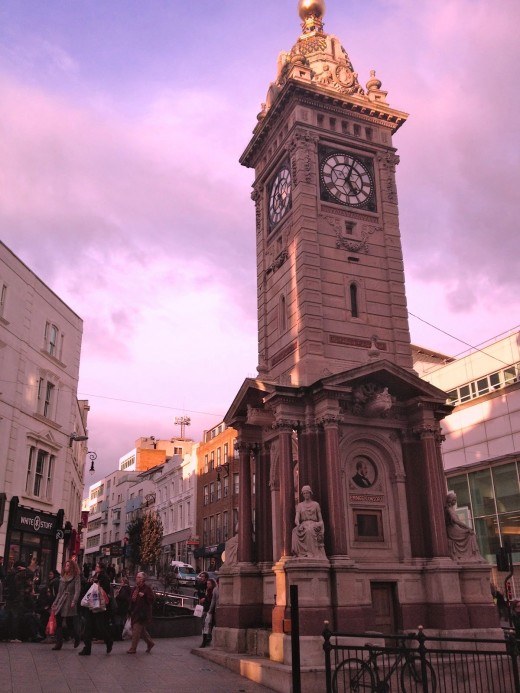
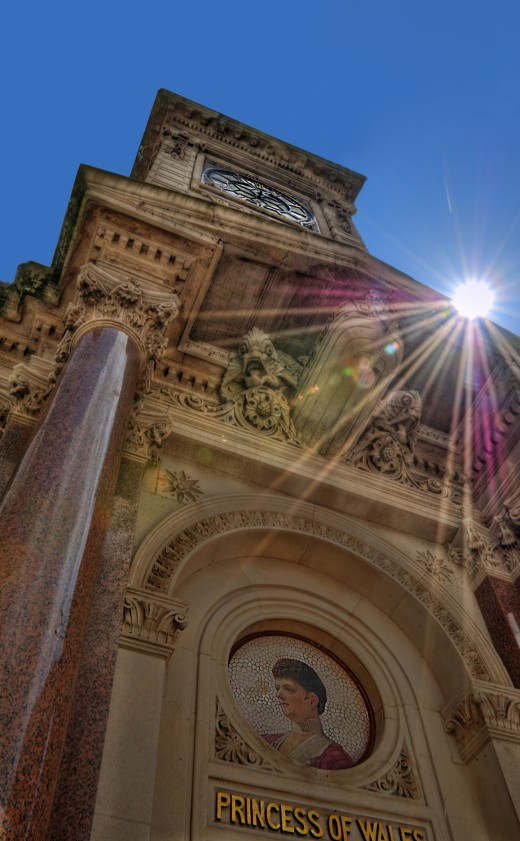
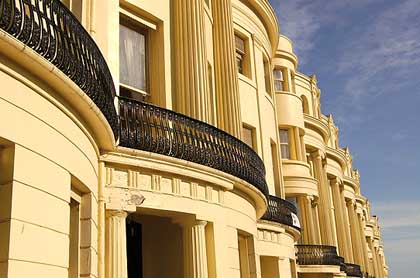
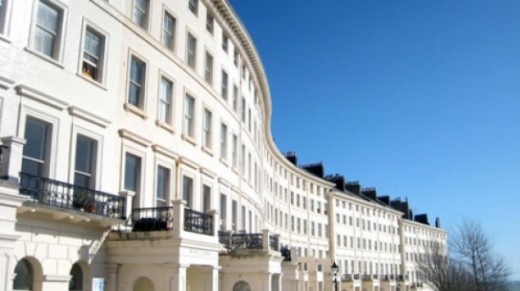
The Seafront: Ideal for Timewalking
The place to get into a true Victorian stride is the seafront itself. Though much of it is in regrettable decline it boasts numerous Victorian features. These include the iconic ornamental railings alongside the entire promenade consisting of massive iron standards, teak railings and heraldic motifs on the cast iron medallions taken from the town’s civic heraldry (pairs of dolphins and a knight’s helmet). These are matched by the wrought iron ornamental lampposts, numerous Victorian shelters which provide seating in the shade and out of the breeze (or out of the rain!) and the Victorian beach arches below the upper promenade. There is also the Birdcage Bandstand built in 1884 and a ten sided kiosk built in 1883. One of my favourite seafront features is the Madeira Lift Tower which was inaugurated in 1890. It was originally operated by a hydraulic pump and could carry fifteen people at the time (ha’penny for a single journey either up or down). The entrance to the lift was based on the Oriental motifs of the Royal Pavilion and the original lift cage had a glass roof and was decorated with mirrors, gilt panels and medallions. The Lift Tower is flanked by the cast-iron colonnades of Madeira Terrace which are simply beautiful though sadly in terminal decline.
Crowning the seafront is/are the piers. The first pier was the Royal Suspension Chain Pier built in 1823. The Chain Pier was partially functional and used as a landing stage for packet boats to France but it was also popular with visitors. The Chain Pier was destroyed by a storm in 1896. Its remains, oak piles, can still be seen at very low tides. The entrance kiosks and the signal cannon of the Chain Pier still exist and have been transferred to the Palace Pier (the kiosks having been transformed into shops).
The West Pier was opened in 1866 and closed in 1975. Since then its deterioration, with major damage caused by storms and fires, has left Brighton’s inhabitants with a lasting trauma to judge by the sighs - and sometimes tears – when the name is mentioned. Today nothing is left but skeletal memories and the only visitors are the starlings which perch there before and after their magical murmurations.
Although the official name of the last remaining pier is Brighton Pier locals absolutely refuse to call it that, opting instead for the name Palace Pier (the ‘proper’ name is actually the Brighton Marine Palace and Pier) if only to salute the fact that Brighton has (or should have) two piers as they still hope against all hopes that the West Pier can be restored. The name Brighton Pier was presented with the argument that Brighton had only one pier and that did not find a favourable response, hence the obstinate adherence to the old names. The Palace Pier was opened in 1899. A concert hall was opened in 1901 and in 1911 this was transformed into a theatre which has since been shut down. Today the Palace Pier mostly boasts loud and noisy funfair attractions though it still retains its Victorian architectural splendour.
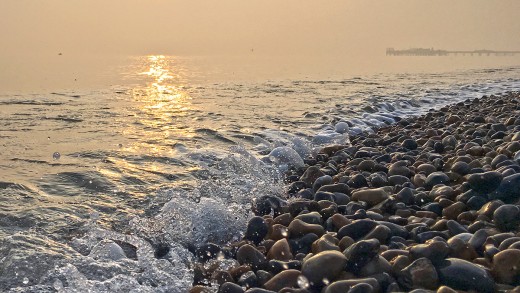
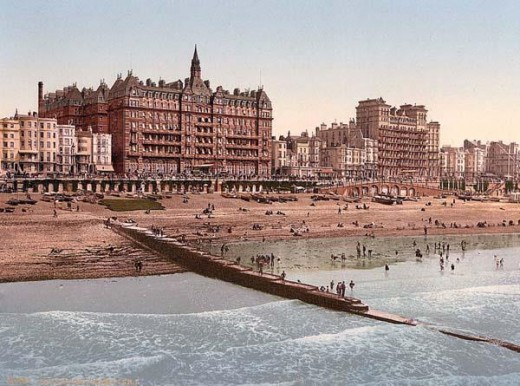
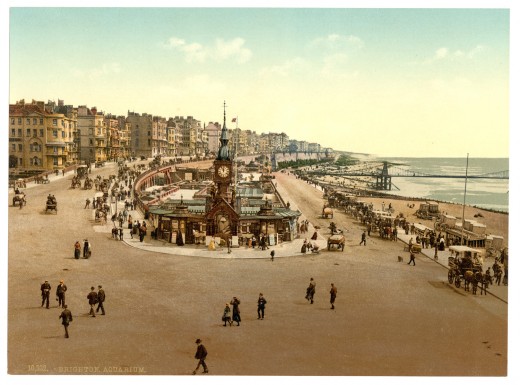
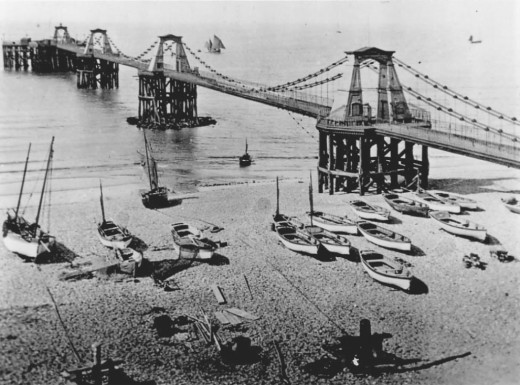
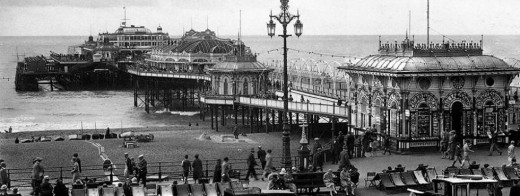
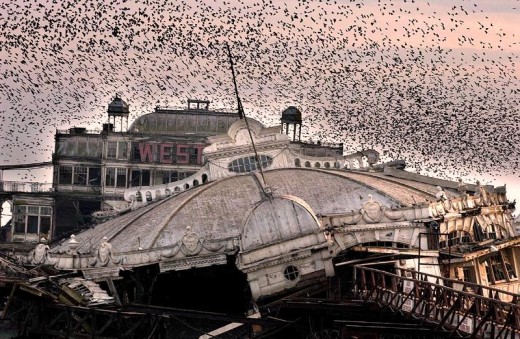
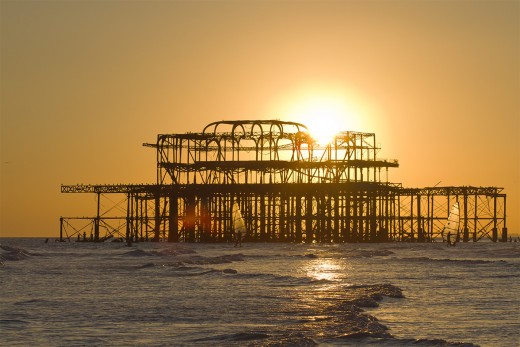
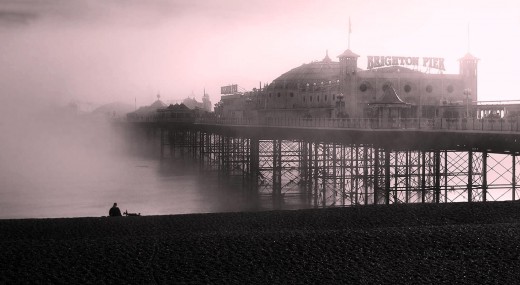
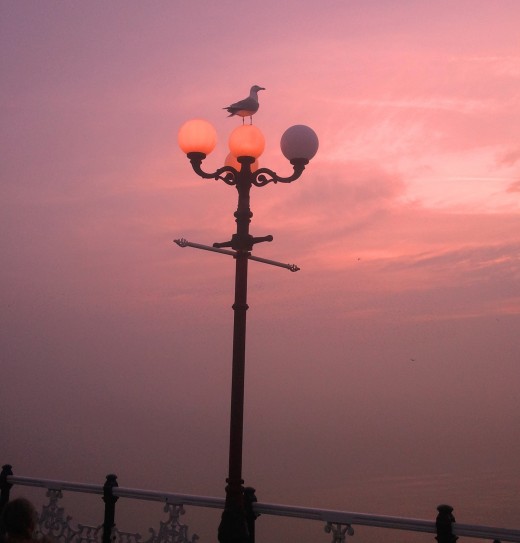
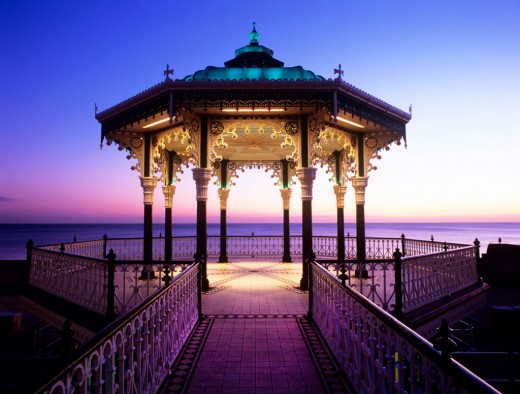
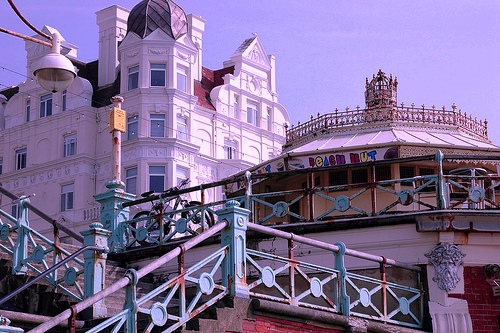
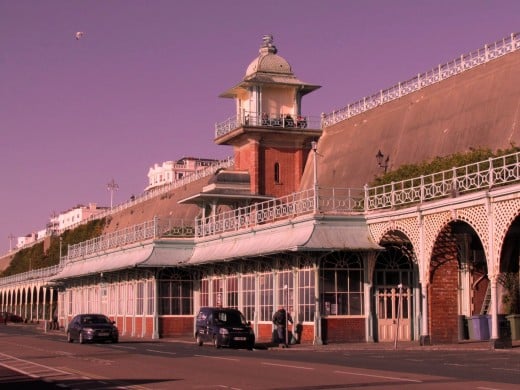
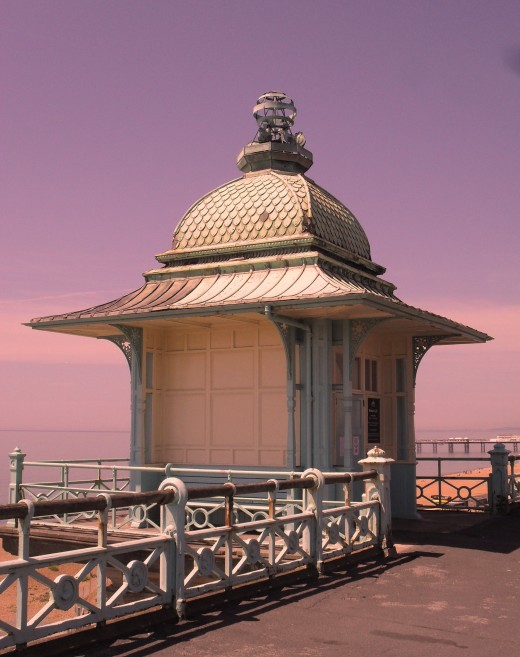
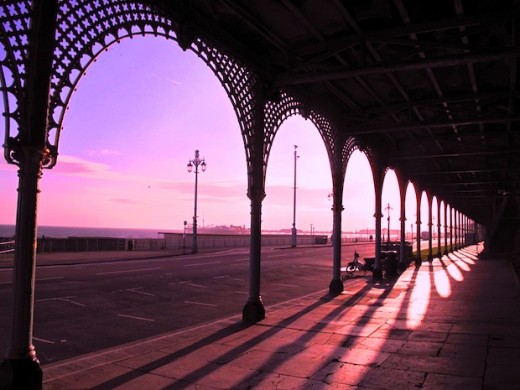
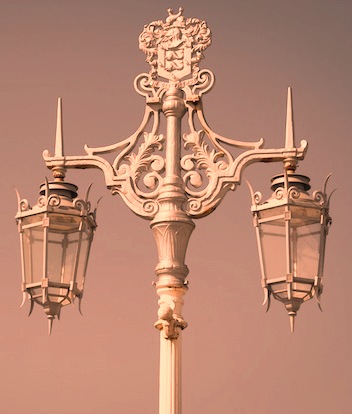
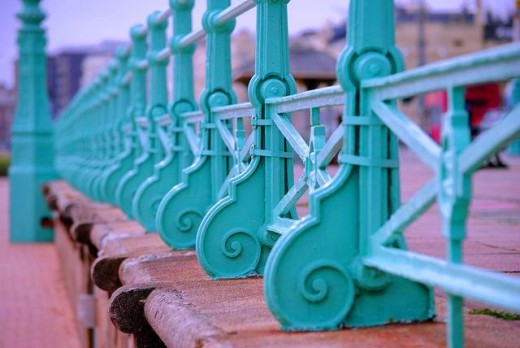
The Railway Station & Steam, Steam, Steam
Brighton’s railway station is a work of Victorian engineering art. It was built by the London & Brighton Railway in 1840 and encompassed a passenger station, goods station, locomotive depot and railway works all perched on a hillside with an inconvenient gradient. The most notable feature of the passenger station are the curved platforms covered by a double-spanned glass and iron roof. The locomotive and carriage works operated from 1841 until 1962. During its operational years more than 1200 steam locomotives were built there as well as prototype diesel and electric engines. The Standard Class 4-2-6-4 Tank locomotives were mostly built in Brighton and known on the railways as ‘Brighton Tanks’. Another iconic feature of the railways in Brighton is the London Road Viaduct which is still in operation. The nearby Bluebell Railway in East Sussex offers a great opportunity to enjoy travel on ye olde carriages pulled by renovated steam engines. The Brighton and Shoreham Tramway opened in 1884 using steam-driven trams. Problems with these steam engines meant that in 1893 they switched to horse-drawn trams. This tramway was closed in 1913.
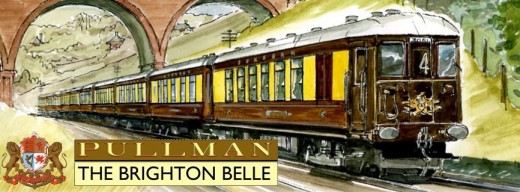
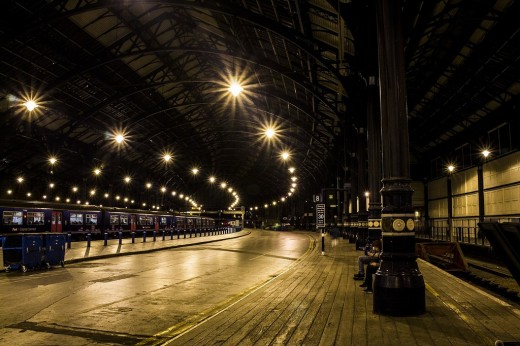
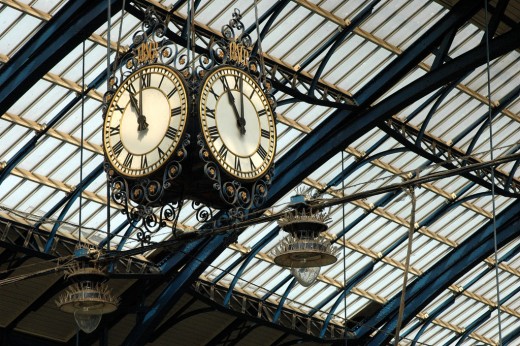
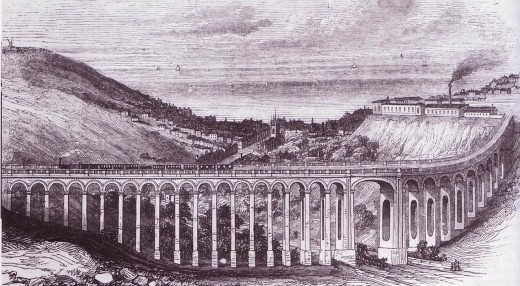
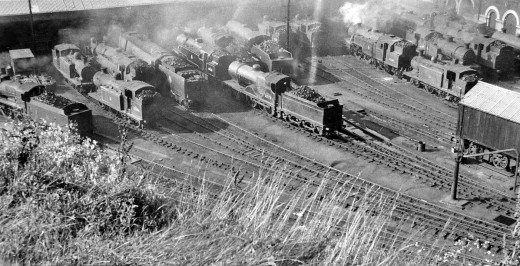
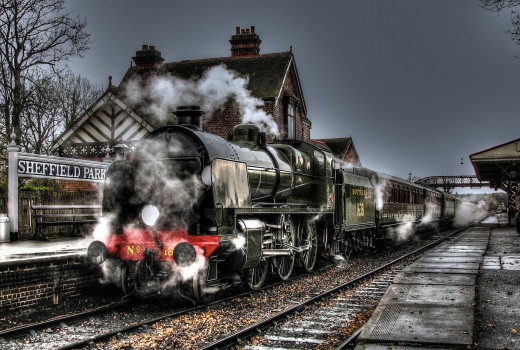
A series of railway posters conveying the spirit of the steam age
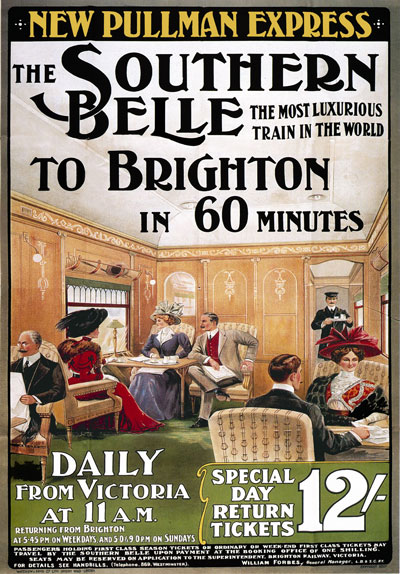
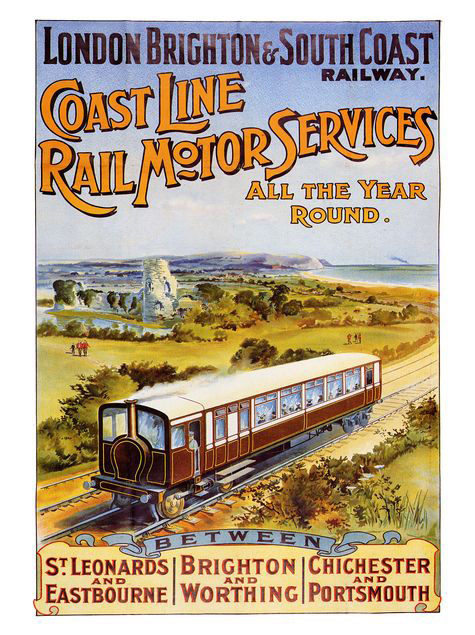
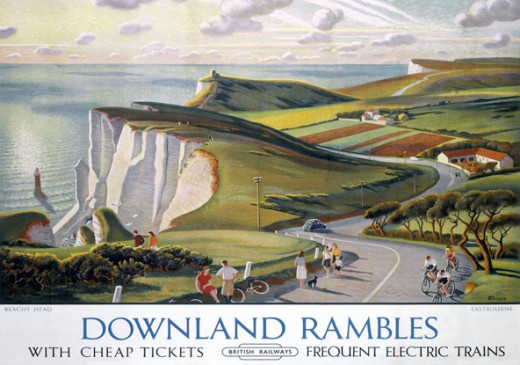
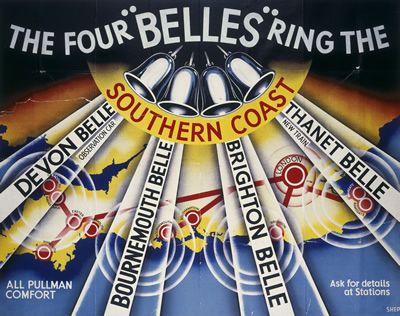
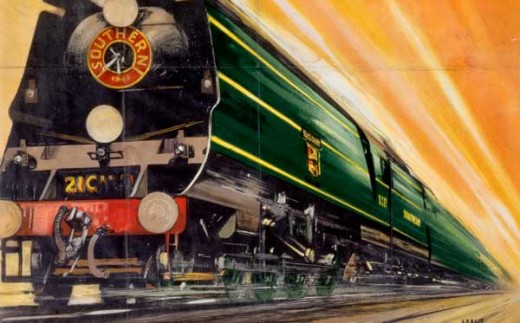
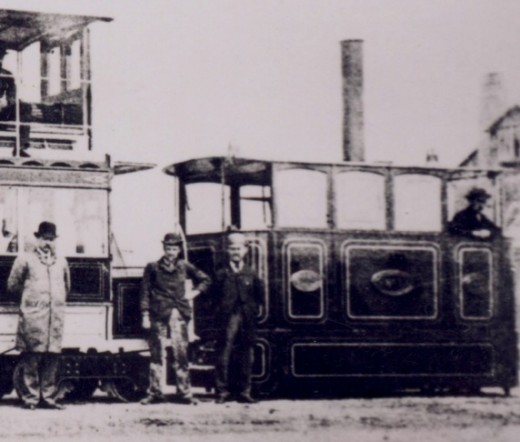
The British Engineerium
The name ‘British Engineerium’ alone should send anyone who professes to feel affiliated to Steampunk into a drooling frenzy and that which is concealed behind that name does not disappoint. The museum is housed in a 19th century High Victorian Gothic former industrial site which was built in 1866 as a water pumping station. In its heyday the pumping station had two boiler houses with condensing engines, a chimney, workshop, underground reservoir and coal cellars. It was closed in 1971 after which a charitable trust was formed as part of a pioneering effort in engineering heritage conservation. The exhibits are all parts of the history of steam power. They include an 1859 Corliss Steam Engine and a 1890 steam-powered fire engine, a model of Stephenson’s Locomotion No 1 engine, the workshop’s original main forge and heavy-duty metal lathe and many smaller steam engines and Victorian tools. The British Engineerium is currently closed for renovation and I for one cannot wait until it opens its doors again.
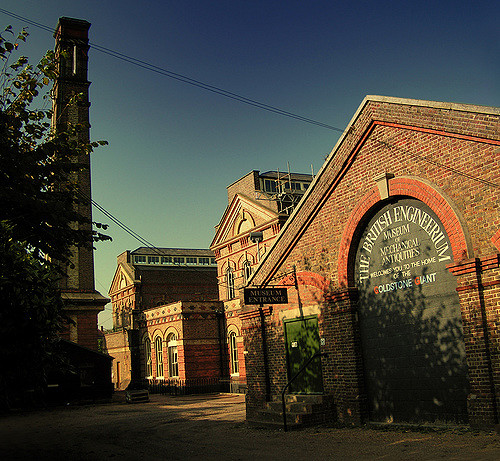
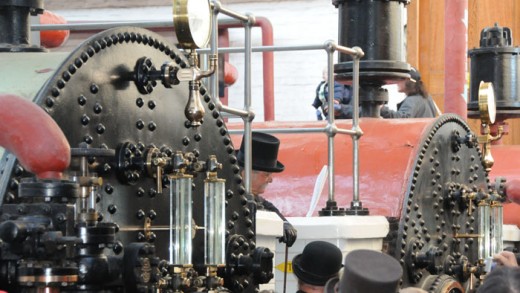
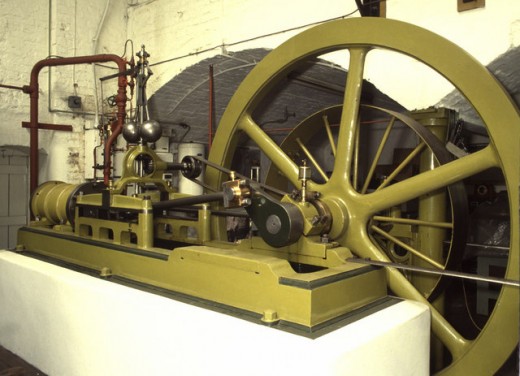
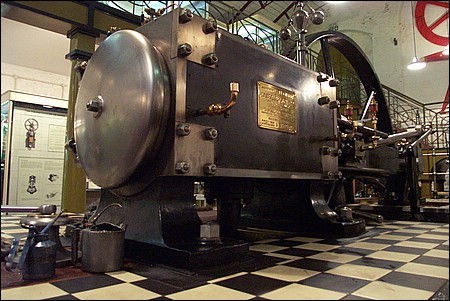
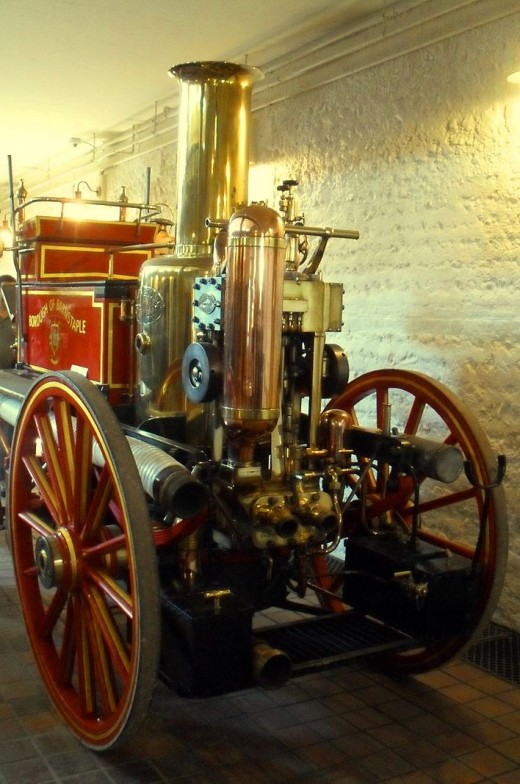
Vintage Wheels
The annual London to Brighton Veteran Car Rally is a must for anybody with an interest in old technology and it doesn’t take a great deal of imagination to transfer some of the vehicles seen passing by on their way to the Finish to a Steampunk theme. Before the real purists shake their head at my enthusiasm for petrol-driven engines let me assure them that proper steam-driven vehicles, though less in number, do make an impressive appearance.
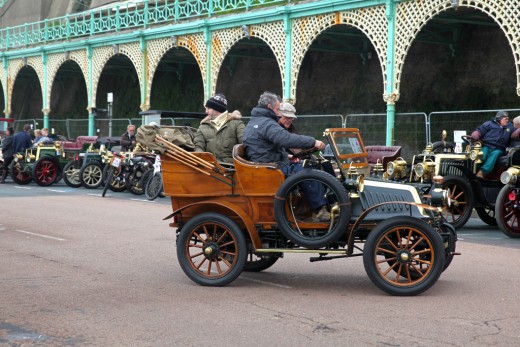
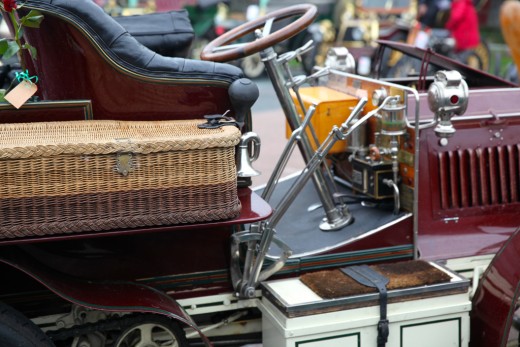
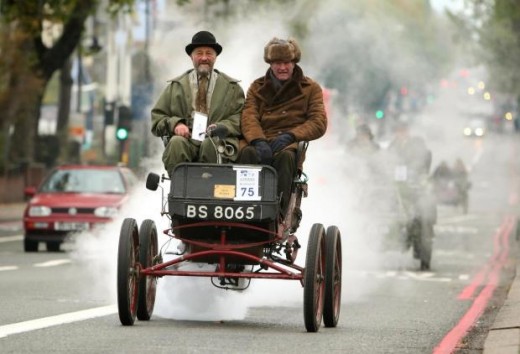
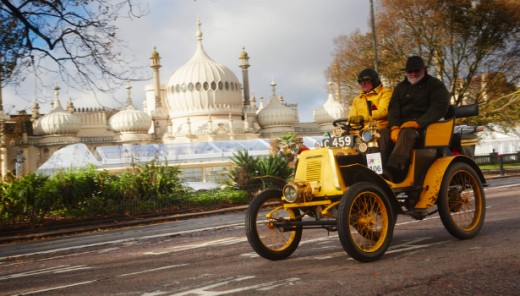
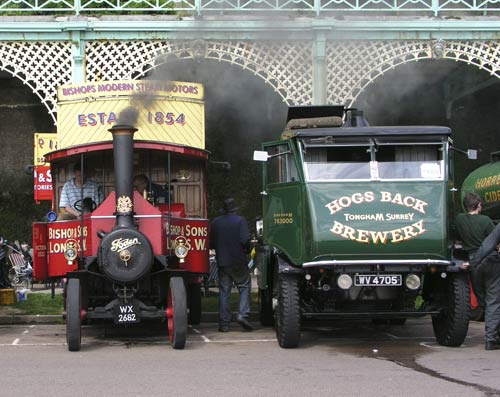
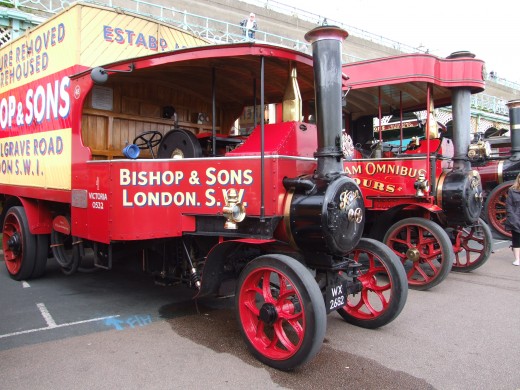
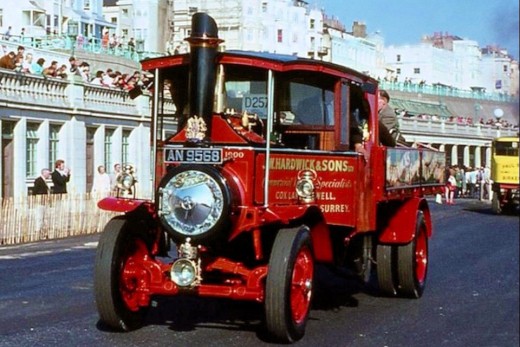
Magnus Volk's Visionary Innovations
Magnus Volk (1851-1937) was the son of a German Clockmaker though he himself was born in Brighton. He became an electrical engineer who left an indelible mark on Brighton. He constructed Volk’s Electric Railway, one of the world’s first electric railways and the oldest one still in operation. It opened in 1883. The line is a narrow gauge one and is electrified by means of a third rail. There are seven electric cars and one diesel engine still in use though the line has been much shortened. The Volk’s Electric Railway being a success Volk sought to extend the line to Rottingdean but rather than tackling the cliffs he opted for a rail vehicle that would move through the sea. The Brighton and Rottingdean Seashore Electric Railway started construction in 1894 and completed the work in 1896. By then a 2.8 mile track had been laid 60 to 100 yards from the shore, the rails supported by concrete blocks attached to the chalk bedrock. The sea-going tram was powered by electricity provided by the single overhead wire suspended along the track. The car had two trolley poles, one as a security precaution in case of mechanical troubles. The tram was supported on four legs some 23 feet long and had a deck 45 feet long and 22 feet wide. It was powered by two General Electric motors using a shaft and worm gear arrangement. The deck had a saloon roofed by a promenade deck. Officially called the Pioneer the contraption was soon nick-named Daddy Longlegs. The law required that this ‘sea-going’ vessel was commanded by a trained sea captain and the tram was duly fitted with a lifeboat and lifebelts. It could carry 160 passengers. The journey from Brighton to Rottingdean took some 35 minutes at low-tide, if the tide was too high the tram would slow down to crawl along at a snail’s pace. Daddy Longlegs was doomed when new sea defences required the tracks to be rebuilt much farther out into the sea; something the company was unable to pay for and the Rottingdean Seashore Electric Railway ceased to exist in 1901. Volk also built a three-wheeled electrical carriage in 1887 and a four-wheeled electric car in 1888.
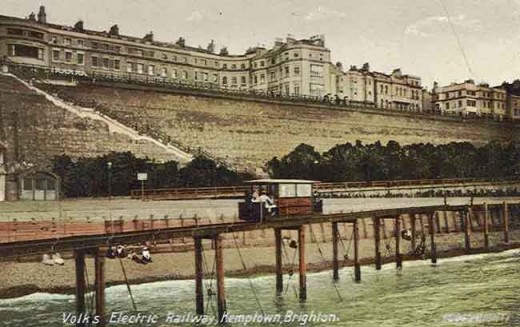
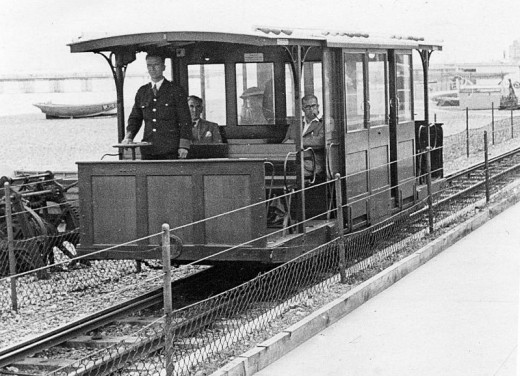
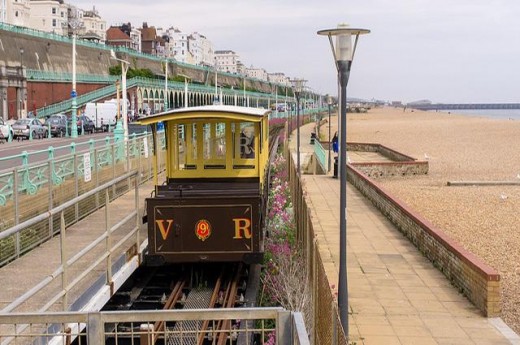
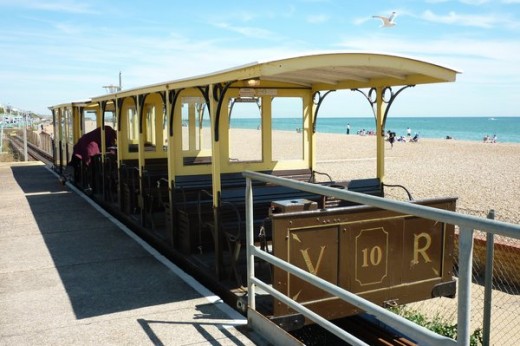
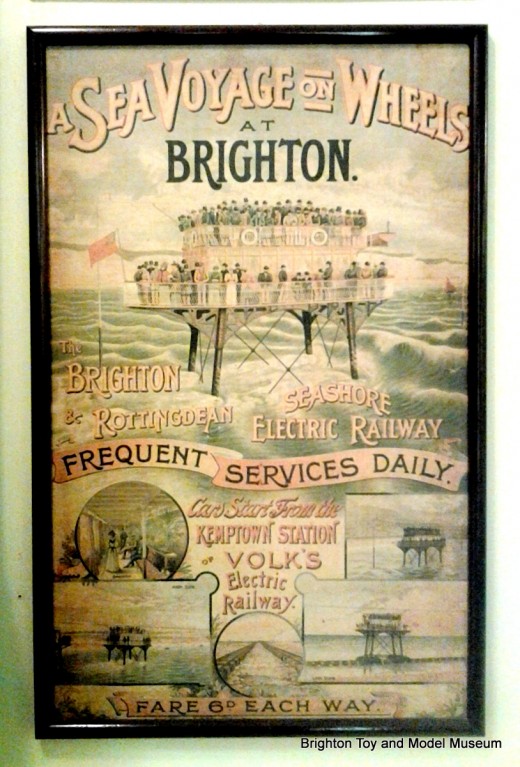
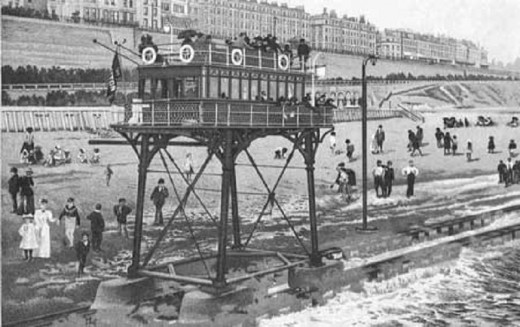
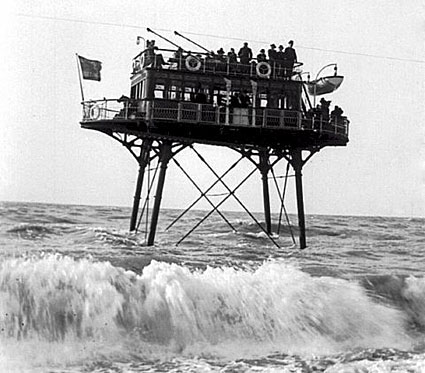
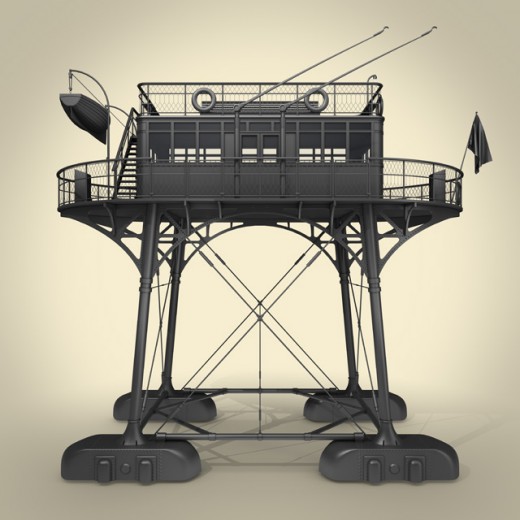
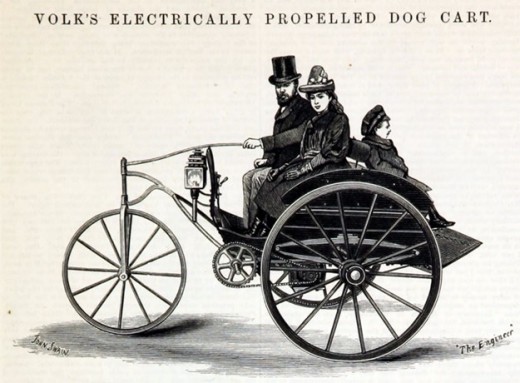
The Yellow Book: Brighton's Steampunk Pub
No treatise combining the words Brighton and Steampunk would be complete without a mention of Brighton’s first Steampunk Pub, The Yellow Book, which can be found at York Place, close to the North Laine quarter. I don’t want to give away too much at this stage as a far more ambitious review of the Yellow Book is underway. Intended as a 1000 word review it already exceeds 4000 words and we have yet to get anywhere near the Yellow Book as some time travel and much adventure is involved. Keep an eye on the Writerpunk Press website for instalments of the heroic attempts to locate the pub’s proprietor.
Exploring the interior of the Yellow Book is an adventure in itself with hidden spiders, a tunnel to New Zealand and all manner of gadgets, toys and games to play with. As well as this local artists display their thematically related work on the walls, a few local authors have their books on display and there is a lovely semi-concealed beer garden behind the pub. The staff are as friendly as can be and almost jump for joy if somebody requests a cocktail so they can demonstrate their considerable skills in mixing up a good drink. The specially made Airship ale is delightful but there are plenty of other select beers, ciders and wines on offer; all, it seems, with a tale attached. The Yellow Book hosts meetings by the Brighton Steampunk Society, has a quiz night, an open-mic night and occasionally a gig-night when entertainers like Professor Elemental perform to a full house. There are also plenty of hats available for those punters who came underdressed (goggle-less, tsss!). Best of all, they have agreed to host England’s launch party for the launch of Merely This and Nothing More: Edgar Allan Poe Goes Punk and we will do our best to outlaunch our goggled cousins across the Pond.

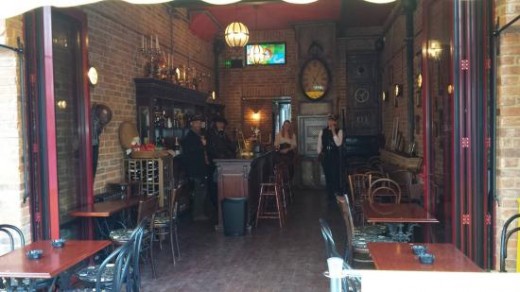
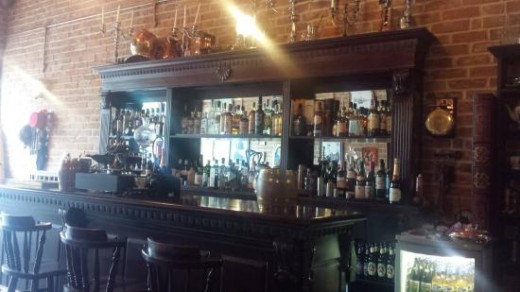
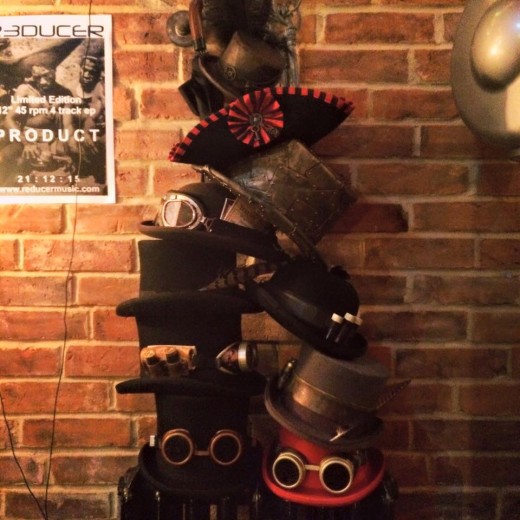
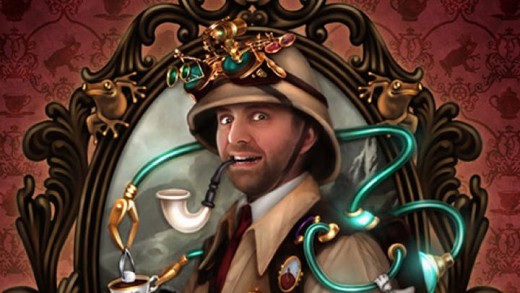
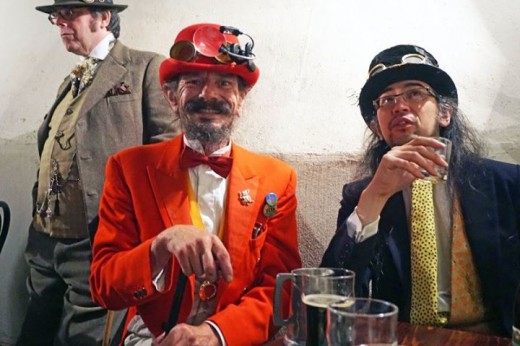
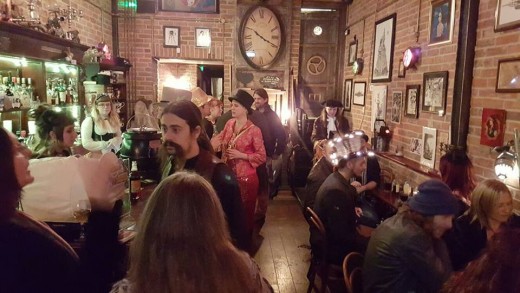
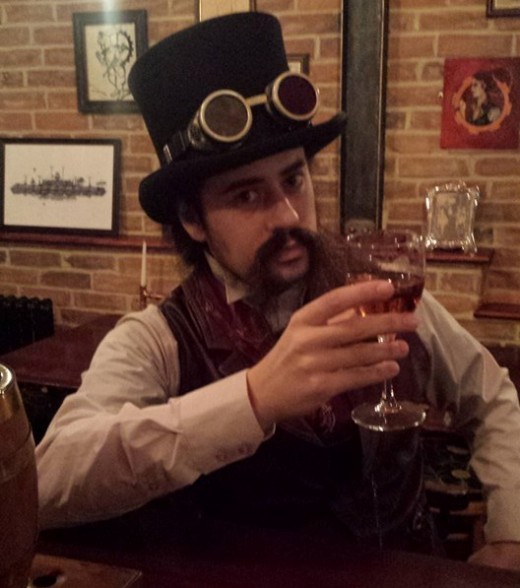
In Conclusion
Once more I have proven how fundamentally lazy I am. Why go to great lengths to transform an old world town into something vaguely steampunky when Brighton has all the required ingredients at hand. A simple walk in most parts of the city provides ample inspiration and as has been hinted at, now that I have started punking this city I find it hard to stop, more projects are already underway. Watch this space, and until then, may the winds favour your course.
If all else ceases to fascinate, one can always plop down on a deckchair and watch the sunset (or read a good book).




